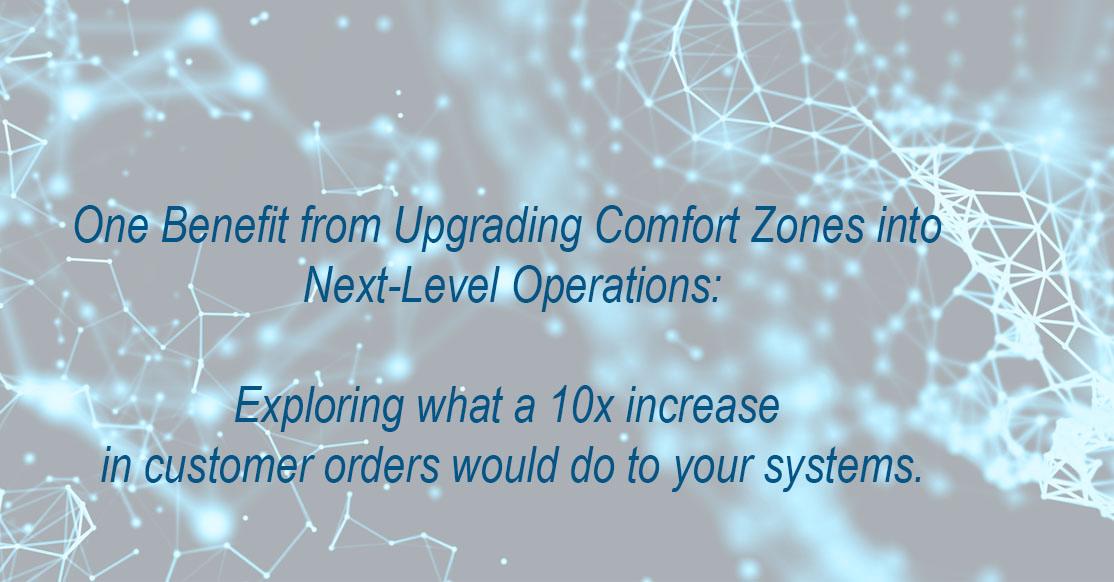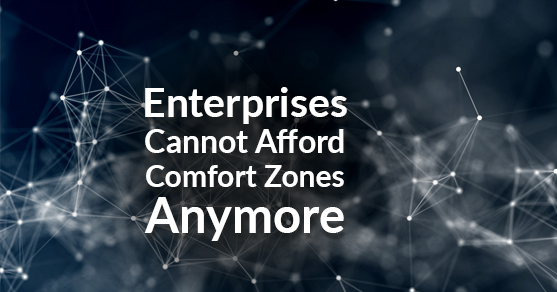Enterprises cannot afford comfort zones in today’s fast-paced digital business environment. For enterprises, and people, there is a constant balance between safety, security and stability and growth. Both want predictability and, yet, achieving a certain level of consistent comfort can slow, or even stop, positive momentum.
Comfort zones can show up in different ways:
- Doing things just because they ‘have always been done this way’.
- Accepting a skills vacuum for new technologies because the focus is on maintaining the status quo.
- Neglecting preparing for the future because short-term wins take precedent over long-term planning.
- Not scaling well in workflows, personnel, communications, and technologies.
- Accepting pushback and resistance from anything that challenges currently accepted beliefs.
- Shadow IT is considered normal (where technology purchasing decisions are made without IT knowledge).
- Buying one-off solutions vs. taking an integrated view of ecosystem needs and investing in unifying capability.
- Ignoring, avoiding or delaying the adoption of the mindset needed to successfully navigate today’s dynamic business landscape.
- Not investing resources in innovation, transformation or organizational upgrades that are led by the ideal customer market, behaviors, and preferences.
If any of these seem familiar in your organization, it’s time to evaluate whether some level of transformation is needed to remain competitive in your market.
What ‘got you here’ will not ‘get you there’. The comfort zones of sameness, or ‘tried and true’ methods, are now being outpaced by fast-changing market conversations and circumstances. Comfort zones are a shared perspective that determine daily actions, workflows, priorities and, ultimately, corporate culture. Maturity comes from working through comfort zones to achieve next-level presence, operations and wins in business.
In other words, the only way to grow (with any degree of intention or modicum of control) is to say goodbye to comfort zones and step into the discomfort of transformation.
“Many companies who have failed to invest in creating an anticipatory mindset and decided to stick to their tried and trusted methods are increasingly struggling to keep up the pace. … it’s the organizations that fail to see the value in driving both small every day and large transformational innovation that often find their industry has been dramatically changed by a yet another start-up that arrives on the scene.” ~ Daniel Burrus
Transcending comfort zones will disrupt the status quo. The process will shake the leaves, branches and maybe even roots of the organization, surfacing what is no longer needed and revealing fresh opportunities. By making the customer’s delight the focal point of systems, processes, and paradigms, your organization can naturally uplevel where needed because it will be obvious as to what needs to change.
Upgrading comfort zones into next-level operations to serve your customers better can look like the following (and more):
- Exploring what a 10x increase in customer orders would do to your systems.
- Inviting staff from different teams to shadow each other through a workday to see what they do and why they do it to understand and improve results.
- Allow employees one day each month to innovate or improve workflows, systems or even products to give your customers added value.
- Working through each business unit systematically to critique and ‘break’ them so they can be improved before a customer experiences the breakdown.
- Doing a trend analysis to forecast emerging needs, opportunities for collaboration and potential limitations in adapting to customer needs and wants.
- Hosting potential customers to a presentation of key concepts to learn what they don’t understand or question about your solution, process or company vision.
- Interviewing lost customers to determine why they chose to not purchase (or continue with) your solution, then using that information to refine your workflows, systems, and solutions.
- Deconstruct your competitors positioning, business model and marketing to learn what they are doing well and what they are missing to identify marketplace gaps and opportunities to serve your customers better.
By intentionally disrupting comfort zones or, at the very least, acknowledging that continuous growth and conscious improvement are the keys to agility, relevance and serving your customers better, your enterprise can increase long-term sustainability. That’s the only comfort zone you want anyway.


